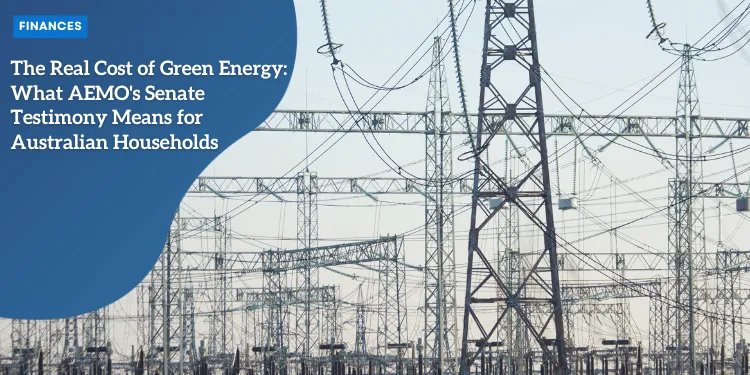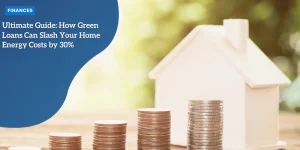The Real Cost of Green Energy: What AEMO’s Senate Testimony Means for Australian Households

Anúncios
A Stark Admission
Australians received an eye-opener during the Senate committee session when the Australian Energy Market Operator’s (AEMO) CEO, Daniel Westerman, acknowledged a critical point.
Under questioning from Nationals Senator Matt Canavan, Westerman admitted the renewable energy plan could not guarantee lower power prices.
This statement directly challenged the Albanese government’s election promise of reducing power prices by $275 by 2025.
Senator Canavan’s inquiry pinpointed the issue. “You’re saying you cannot guarantee that the current government policy settings which you model will deliver lower power prices?” he asked.
Anúncios
Westerman’s straightforward reply— “I can’t guarantee that, no”— left no ambiguity.
He clarified that although the integrated system plan is the “lowest cost pathway” for the energy transition, it doesn’t necessarily result in cheaper wholesale electricity prices.
Discrepancy with Government Promises
This revelation juxtaposes sharply with the government’s repeated assurances.
Climate Change and Energy Minister Chris Bowen had consistently emphasized, “We’re not walking away from our commitment to get more renewables into the system and, yes, they are the cheapest form of energy available.”
However, AEMO’s stance somewhat dampens the optimism associated with these statements.
Anúncios
The assurance that renewable energy is the cheapest form of energy conflicts with the reality AEMO presented.
The issue lies in the plan’s scope—it focuses on the overall system cost rather than the immediate cost implications for consumers.
This discrepancy highlights a significant divergence between election promises and practical outcomes.
Uncomfortable Truths and Policy Impact
Westerman’s admission brings forth uncomfortable truths about the renewable energy plan.
It exposes a potential gap in the policy settings, where the focus on long-term gains might undermine short-term affordability for consumers.
As a result, there is an inherent tension between the goals of sustainability and affordability.
Given the government’s commitment to expanding renewable energy, the revelation from AEMO underscores the complexities involved.
It demonstrates that implementing large-scale renewable infrastructure is far from straightforward and raises crucial questions about policy effectiveness.
This scenario compels policymakers to re-evaluate their strategies to ensure they meet the dual objectives of environmental sustainability and economic affordability.
As Australia continues its renewable energy journey, aligning environmental aspirations with economic realities remains essential.
Keeping public trust intact while navigating these challenges is crucial for the long-term success of the energy transition.
Labor’s Election Promises vs. Reality
Analysis of Labor’s $275 Pledge
When Labor campaigned for the election, a linchpin of their platform was a bold pledge: to reduce household power bills by $275 annually by 2025.
This promise was set against a backdrop of rising energy costs and mounting voter pressure for financial relief.
The commitment was ambitious, signaling Labor’s intent to deliver both cost-effective and sustainable energy solutions.
Emphasis on Renewables
Labor’s strategy to achieve this cost reduction hinged on a massive overhaul of Australia’s energy grid.
They aimed to modernize the system and massively integrate renewable energy sources, banking on the belief that renewables are the cheapest form of energy available.
Climate Change and Energy Minister Chris Bowen reiterated this during various public addresses, emphasizing that renewables like solar and wind were the cheapest energy sources ever available.
The Gap Between Promises and Reality
However, recent revelations from the Australian Energy Market Operator (AEMO) have cast significant doubt on these assurances.
During a Senate committee session, AEMO CEO Daniel Westerman admitted that the current renewable energy plan does not guarantee lower electricity prices, despite the government’s emphasis on renewables as the most economical path forward.
According to AEMO, while the Integrated System Plan (ISP) might represent the lowest cost pathway for energy transition, it doesn’t necessarily translate to reduced wholesale electricity prices.
This disclosure from AEMO highlights a critical discrepancy between the Albanese government’s promises and the market operator’s assessments.
The government’s narrative, which pivots on the predictably lower costs of renewable energy, fails to account for the practical complexities involved in such a large-scale transition.
Implications for Policy and Public Perception
This gap between campaign promises and real-world outcomes raises significant questions about the effectiveness and transparency of current policy settings.
The government’s commitment to renewable energy remains unwavering, yet AEMO’s insights underline the tension between long-term sustainability and immediate consumer cost savings.
s the pursuit of increased renewable capacity continues, these complexities point to a need for clearer communication and more nuanced policymaking.
As we delve further into understanding the integrated system plan and its implications, it’s crucial to keep these realities in mind.
The path toward a sustainable energy future is fraught with challenges, both expected and unforeseen, affecting not just policy direction but also household experiences.
Understanding the Integrated System Plan
AEMO’s ‘Lowest Cost Pathway’ Explanation
At the heart of Australia’s renewable energy transition is the Integrated System Plan (ISP), designed by the Australian Energy Market Operator (AEMO).
The ISP serves as a roadmap, outlining the ‘lowest cost pathway’ for transforming the energy grid.
This ambitious plan aims to integrate renewable energy sources, focusing on keeping overall costs as low as possible during the transition.
Despite this strategic approach, AEMO CEO Daniel Westerman highlighted an important caveat: the pathway, though cost-effective from an infrastructure standpoint, doesn’t guarantee lower electricity prices for consumers.
This revelation starkly contrasts with the Albanese government’s claims that more renewables would lower household power bills.
Discrepancy Between System Efficiency and Consumer Cost Savings
AEMO’s plan prioritizes the efficiency of the energy system as a whole.
This involves:
- Building new renewable energy generation capacities
- Upgrading transmission networks for better integration
- Developing storage solutions like batteries and pumped hydro
However, system efficiency doesn’t always equate to consumer savings.
Increased infrastructure investments, grid modernization, and operational costs mean that the anticipated savings might not be felt at the consumer level.
This discrepancy raises pivotal questions.
Does a highly efficient system translate to economic benefits for households? The Integrated System Plan prioritizes long-term stability and efficiency, not immediate consumer savings.
This nuanced distinction is crucial in understanding the broader economic implications of the renewable energy push.
Complexities of Implementing Large-Scale Renewable Infrastructure
The implementation of large-scale renewable infrastructure is fraught with challenges.
The benefits of renewable energy—such as reduced emissions and sustainable power generation—are clear.
Nonetheless, the complexity of integrating these technologies into the existing grid cannot be underestimated:
- Transmission Upgrades: Significant enhancements in the transmission network are essential to distribute renewable energy efficiently nationwide.
- Storage Solutions: As renewable sources like solar and wind are intermittent, reliable storage solutions are necessary to ensure a stable supply.
- Cost Management: Balancing the upfront investment with long-term benefits is tricky, especially when aiming to keep energy affordable for end-users.
These factors contribute to the complexity and expense of the transition process.
While the ISP sets the stage for a future-proof energy infrastructure, the path to achieving both sustainability and affordability remains steep.
Transparent communication about these aspects is vital.
Understanding these nuances helps stakeholders, including policymakers and the public, set realistic expectations about the journey towards a renewable energy future.
Continuing to navigate this transition requires balancing sustainability goals with the economic realities faced by consumers.
Effective policies must bridge the gap between system efficiency and practical cost savings, ensuring the public remains supportive of renewable initiatives.
Economic Implications for Australian Households
Impact of Renewable Transition on Wholesale Electricity Prices
The Australian Energy Market Operator’s (AEMO) recent admissions reveal a complex and somewhat sobering picture of the renewable energy transition’s impact on electricity prices.
Despite the ambitious promises made by the Albanese government, transitioning to renewables doesn’t necessarily guarantee lower wholesale electricity prices.
During a Senate committee session, AEMO’s CEO, Daniel Westerman, clarified that while the Integrated System Plan (ISP) is the ‘lowest cost pathway’ for transitioning the energy grid, it does not ensure cheaper electricity for consumers.
This acknowledgment underlines a critical gap between the government’s optimistic projections and the pragmatic realities faced by market operators.
As AEMO focuses on cost-effective solutions for national infrastructure, significant investments in transmission upgrades and storage solutions are needed.
These infrastructure costs could offset any immediate benefits from cheaper renewable energy sources.
Tension Between Sustainability Goals and Affordability
One of the main challenges in the current renewable energy policy is balancing sustainability goals with affordability.
The government’s renewable energy agenda seeks to leverage solar and wind power—deemed the cheapest forms of energy by officials like Climate Change and Energy Minister Chris Bowen.
However, the costs involved in transforming the existing energy infrastructure are substantial and have far-reaching implications.
These costs include:
- Upgrading the transmission grid to accommodate renewable energy.
- Significant investments in energy storage solutions.
- Developing and maintaining renewable energy facilities.
These transformative efforts are essential for a sustainable energy future, but they come with an economic trade-off.
The rising wholesale prices, as warned by AEMO, could mean higher electricity bills in the short term.
This tension between achieving a green energy future and keeping energy affordable for consumers is a significant policy challenge.
Practical Challenges in Delivering Promised Cost Reductions
Delivering on the promise of reducing power bills by $275 annually by 2025 is fraught with practical challenges.
The government’s pledge, made during the election campaign, was predicated on the belief that scaling up renewable energy would drive down prices.
However, the practicalities of implementing this large-scale renewables plan paint a different picture.
Several factors contribute to the complexity:
- The need for robust and resilient grid infrastructure to handle the intermittent nature of renewable energy.
- Ensuring steady energy supply during periods when renewable sources generate less power.
- Managing the long-term costs of maintaining new infrastructure and storage systems.
These complexities make it difficult to guarantee the advertised cost reductions in power bills.
As Australia progresses through its renewable energy transition, consumers may not see the promised financial relief immediately.
Instead, the immediate focus will likely be on stabilizing the grid and managing the operational costs of integrating advanced renewable technologies.
While the Long-term vision of a sustainable energy system remains compelling, the short-term economic implications for households are significant.
Ensuring public trust and maintaining transparency about these challenges will be crucial moving forward.
Future Policy Considerations
Balancing Environmental Goals and Economic Realities
In the wake of AEMO’s revelations, it is clear that the path to a sustainable energy future is fraught with economic challenges.
The Australian government must adopt a balanced approach that addresses both environmental aspirations and the financial impacts on households.
Renewable energy, while promising long-term benefits, carries significant upfront costs that can strain public financial expectations.
Transparent Communication about Transition Costs
A key element in navigating this complex landscape is honest and clear communication about the real costs of the energy transition.
Policymakers must be upfront about the potential for higher short-term costs as new renewable structures, such as transmission upgrades and storage systems, are implemented.
Misleading promises or overoptimistic projections can erode public trust, making it vital to set realistic expectations.
Here’s what needs to be prioritized:
- Acknowledging the immediate financial impacts on consumers.
- Offering detailed plans on mitigating these costs, such as subsidies or financial aid.
- Ensuring continuous public engagement to foster understanding and support for long-term goals.
Challenges in Maintaining Public Trust
Maintaining public trust is crucial for the successful implementation of renewable energy policies.
The admission by AEMO CEO Daniel Westerman that renewable plans might not guarantee lower power costs has already introduced a layer of skepticism.
Overcoming this requires:
- Clear and consistent messaging from both the government and energy authorities.
- Transparency about the progress and hurdles in transitioning to renewable energy.
- Frequent updates and open forums for public feedback and concerns.
A candid approach about the complexities of the transition, coupled with evidence of tangible progress towards sustainability goals, will be essential in maintaining public confidence.
Navigating the future of Australia’s energy policy involves accepting and addressing these multifaceted challenges, ensuring that economic and environmental objectives are both met responsibly.






